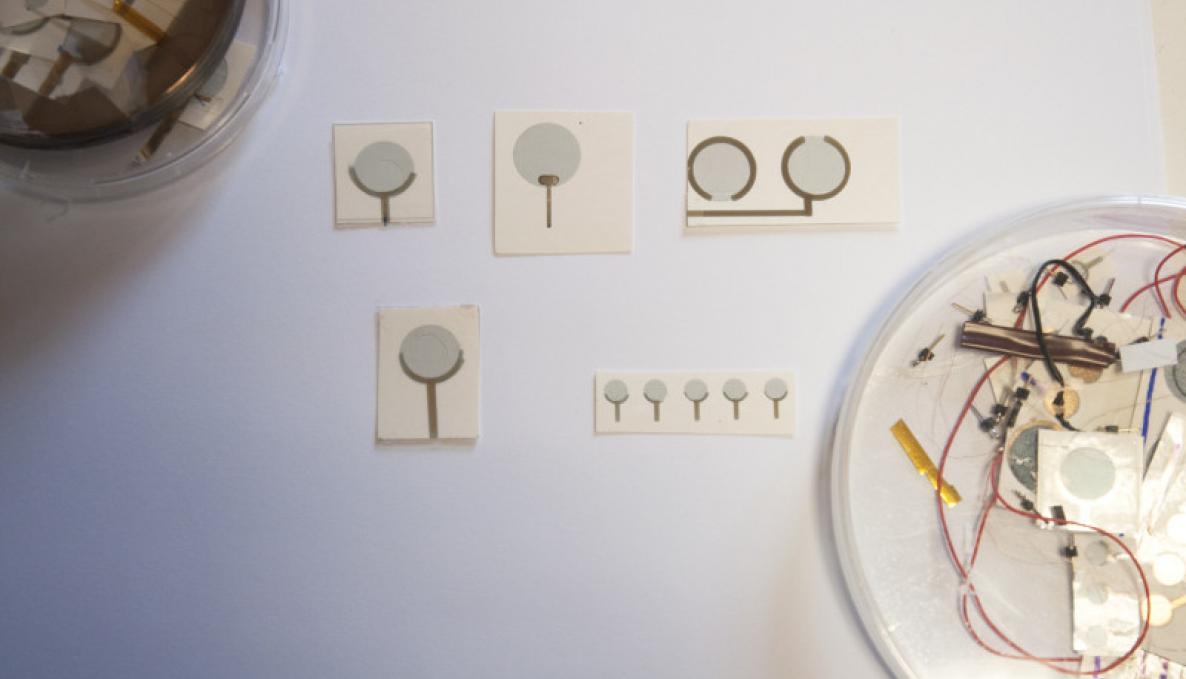New biocompatible tattoo electrodes from printable inks: research paper by the IIT Centre, Sant’Anna School Biorobotics Institute and University of Milan published in journal Advanced Science

The research results on biocompatible tattoo electrodes from printable inks are described in journal Advanced Science. The new electrodes have been developed at the IIT Centre - Pontedera, Sant’Anna School BioRobotics Institute, and University of Milan.
Francesco Greco, assistant professor at the University of Technology - Graz (Austria), led the development of this research for electromyography applications, which is based on novel materials that retain electrical conductivity. Tattoo electrodes have been successfully applied to measure electromyogram, electrocardiogram and electroencephalogram. In addition, progresses in printed electronics provided suitable techniques for fabrication of biocompatible devices providing important information about health conditions through the cell signalling.
Researchers Virgilio Mattoli of IIT Centre- Pontedera, Paolo Cavallari at University of Milan and the team coordinated by Christian Cipriani at Sant’Anna School BioRobotics Institute, achieved results that are critical to numerous applications in biomedical engineering.
Combined with screen-printing technologies, these new flexible skin surface electrodes can easily read electrical signals, such as signals from the brain. They can incorporate other sensors and show stable adhesion on the body: face, arm, fingers, and legs. The tattoo dry (with no gel layer) electrodes may adhere to the skin and monitor electromyography recordings for three days. After their use, the tattoo electrodes can be removed with soap and water, as in the case of temporary tattoos. These novel tattoo electrodes, as perforable skin-contact electrode through which hair can grow, permit to measure long-term recordings on areas with high hair density.
"With the advance in the “epidermal electronics” field, which developed the wearable biological sensors, the new tattoo electrodes have demonstrated to be low-cost, highly comfortable and suitable for various electrophysiological measurements. However, in order to meet the requirements of biomedical applications, the tattoo electrode technology needs to be advanced without the fabrication cost becoming prohibitive” said Francesco Greco.
“Our future goal is to fabricate wireless tattoo electrodes – said Laura Ferrari, researcher at the IIT Centre – Pontedera and the first-author of the paper – and integrate all the necessary components and transmitters to collect high-quality signals”.
“As the Inkjet printing was adopted for fabrication, this method can allow for long-term and multi-site recording devices suitable for different electrophysiological applications (patients/professional athletes/sportsmen in clinical and daily activities)” said Paolo Cavallari.
“We think that universities and research centres can engage more effectively to face future challenges and provide innovative ideas on how partners could collaborate about potential saleable products, research outputs and publications combining the best academic thinking with the laboratory expertise – said Christian Cipriani, director of Sant’Anna School BioRobotics Institute.
Cover photo: Tattoo electrodes.



